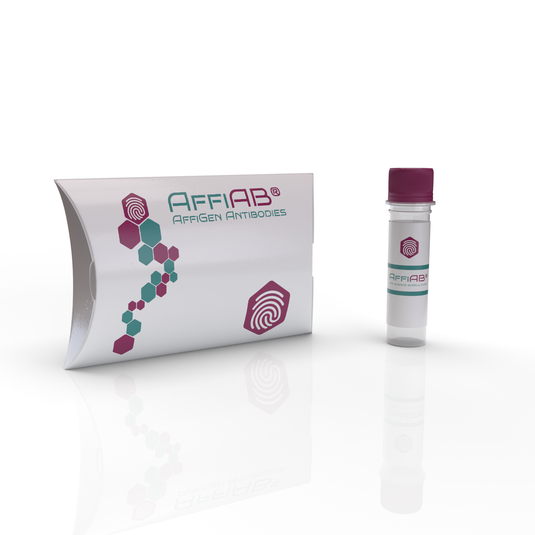The AffiAB® Goat Anti-ProQ Polyclonal IgG Antibody is an industry-leading antibody specifically developed to detect ProQ proteins. Its high specificity and affinity ensures reliable and accurate results. Perfect for research, academic or industrial applications.
The AffiAB® Goat Anti-ProQ Polyclonal IgG Antibody is an antibody designed to specifically target and bind to the ProQ protein. ProQ is a protein that plays various roles in cellular processes, and its specific functions may vary depending on the organism and context.
This polyclonal antibody is generated by immunizing goats with purified ProQ protein or a specific peptide sequence derived from ProQ. The resulting antibodies are then purified from goat serum to ensure high specificity and quality.
The AffiAB® Goat Anti-ProQ Polyclonal IgG Antibody is commonly used in research applications to study the expression, localization, and function of ProQ in different cell types and organisms. By detecting and visualizing ProQ, researchers can gain insights into its cellular distribution, interactions with other molecules, and potential roles in biological pathways.
Researchers often employ techniques such as immunoblotting, immunohistochemistry, immunofluorescence, and immunoprecipitation to analyze ProQ protein expression and characterize its functions. The antibody's specificity ensures reliable and accurate detection of ProQ, enabling researchers to investigate its involvement in cellular processes and molecular mechanisms.
It is important to note that the AffiAB® Goat Anti-ProQ Polyclonal IgG Antibody specifically recognizes ProQ and may not cross-react with other proteins or molecules. Validation experiments and appropriate controls should be performed to ensure the antibody's performance and specificity in the specific experimental conditions.
In summary, the AffiAB® Goat Anti-ProQ Polyclonal IgG Antibody is a valuable tool for studying the expression, localization, and function of the ProQ protein. By targeting ProQ, researchers can gain a better understanding of its roles in cellular processes and its potential implications in various biological contexts.

